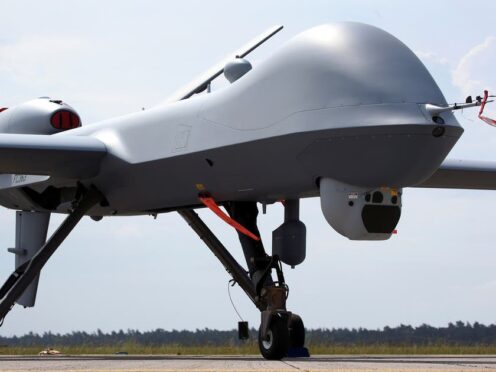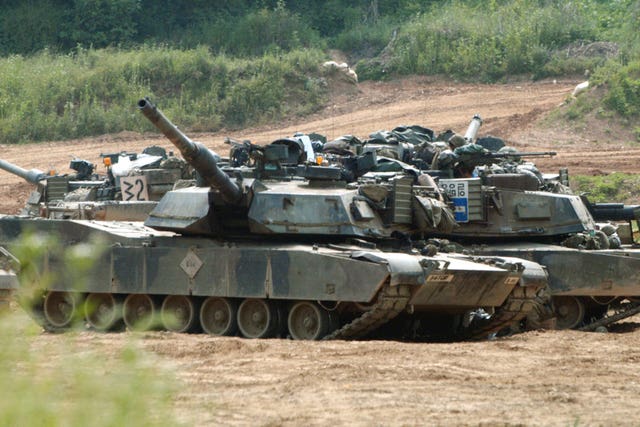
China has announced sanctions against two US defence companies over what it says is their support for arms sales to Taiwan, the self-governing island democracy Beijing claims as its own territory to be recovered by force if necessary.
The announcement freezes the assets of General Atomics Aeronautical Systems and General Dynamics Land Systems held within China. The measure also bars the companies’ management from entering the country.
Filings show General Dynamics operates half-a-dozen Gulfstream and jet aviation services operations in China, which remains heavily reliant on foreign aerospace technology even as it attempts to build its own presence in the field.
The company helps make the Abrams tank being purchased by Taiwan to replace outdated armour intended to deter or resist an invasion from China.
General Atomics produces the Predator and Reaper drones used by the US military. Chinese authorities did not go into details on the company’s alleged involvement with supplying arms to Taiwan.
Beijing has long threatened such sanctions, but has rarely issued them as its economy reels from the Covid-19 pandemic, high unemployment and a sharp decline in foreign investment.
“The continued US arms sales to China’s Taiwan region seriously violate the one-China principle and the provisions of the three China-US joint communiques, interfere in China’s internal affairs, and undermine China’s sovereignty and territorial integrity,” China’s foreign ministry said in a statement.
It insists that the mainland and the island to which Chiang Kai-shek’s Nationalist forces fled amid civil war in 1949 remain part of a single Chinese nation.
Sanctions were levelled under Beijing’s recently enacted Law of the People’s Republic of China on Countering Foreign Sanctions.

General Dynamics’ fully-owned entities are registered in Hong Kong, the southern Chinese semi-autonomous city over which Beijing has steadily been increasing its political and economic control to the point that it faces no vocal opposition and has seen its critics silenced, imprisoned or forced into exile.
Despite their lack of formal diplomatic ties — a concession Washington made to Beijing when they established relations in 1979 — the US remains Taiwan’s most important source of diplomatic support and supplier of military hardware from fighter jets to air defence systems.
Taiwan has also been investing heavily in its own defence industry, producing sophisticated missiles and submarines.
China had 14 warplanes and six navy ships operating around Taiwan on Wednesday and Thursday, with six of the aircraft crossing into Taiwan’s air defence identification zone — a tactic to test Taiwan’s defences, wear down its capabilities and intimidate the population.
So far, this has had little effect, with the vast majority of the island’s 23 million people opposing political unification with China.

Enjoy the convenience of having The Sunday Post delivered as a digital ePaper straight to your smartphone, tablet or computer.
Subscribe for only £5.49 a month and enjoy all the benefits of the printed paper as a digital replica.
Subscribe